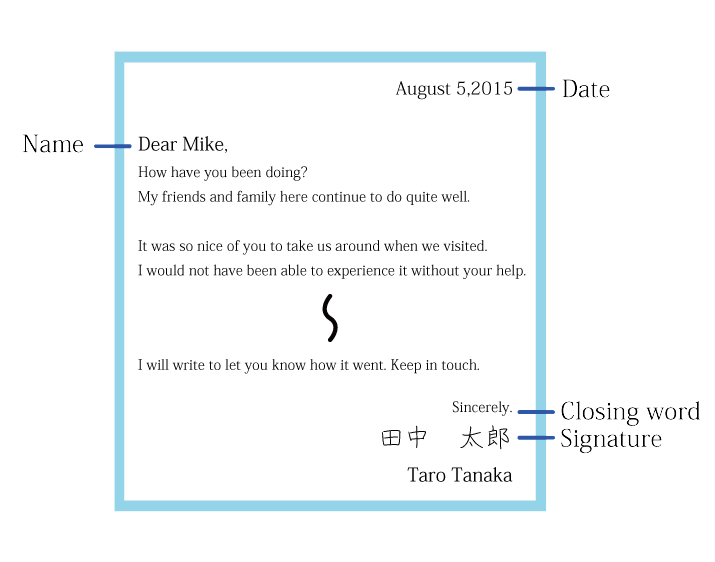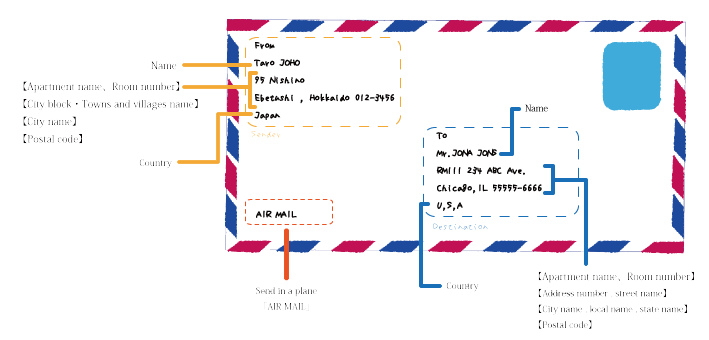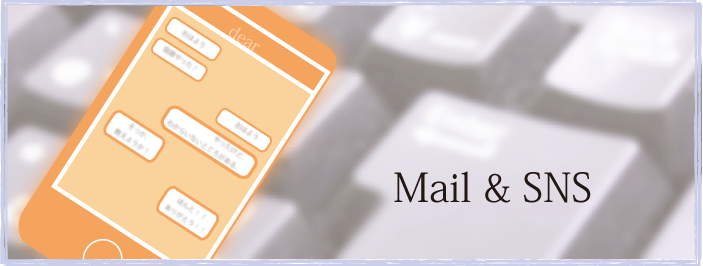
Conveying thoughts. Expressing feelings.
These kinds of things.
WORDS
We use words to communicate.
Different people speak different languages, but we all use words to convey thoughts, express feelings, and interact.
Words can warm the heart.
Words alone can make us feel happy.
We can smile when we understand what another is thinking.
However, words can also hurt.
Words alone can make us feel sad.
We can cry when we understand what another is thinking.
However, words can also heal.
Sometimes we can't say what we want.
For example, when we feel shy,
or for example, when we are afraid to apologize.
Or, sometimes, even if we can find the words we want, they don't ‘reach’ the other person.
For example, when the other person lives far away,
or, for example, when we want to express ourselves to someone we've never met before.
This Web page is all about words, and how to send them.
It includes, of course, only a small portion of how to do so, but we hope that it will help you convey your feelings.
Sending words to someone, and to the world.
Words alone can make us feel sad.
We can cry when we understand what another is thinking.
On the other hand, words can also redeem hurt.

Let’s try putting thoughts and feelings into words.
Try writing your feelings on a postcard or letter paper.
You can say things with written words that are hard to say in spoken words.
・How to write a letter.
It’s fun to get letters from friends and family, even if it's just a few words or pictures.
Making drawings of your mother, writing birthday cards to friends, apologizing to someone you hurt with a letter because you couldn't say it directly.
Do you have childhood memories like these?
This kind of correspondence is fine. But what if it's to someone above you-someone older or in charge, like a boss?
Do you know that how to write such a letter?
We offer some tips on how to write a good letter here.
1: Sending a sealed letter or postcard?
If you've ever thought, “I think I'll send a letter,” have you ever wondered whether to send a postcard or sealed letter?
“Postcards are cheaper than letters, so I'll send a postcard!”
“I want to send a photo, so I'll send a sealed letter!”
Perhaps that’s how you choose?
In fact, which is better to send depends on the contents and occasion.
-- Cases where sealed letters are better --
- When sending to a superior
- Formal events, such as marriage and childbirth.
- Get-well letters
- Requests
- Letters of thanks and appreciation
-- Cases where postcards are better --
- When sending informally to friends, family and acquaintances.
- Seasonal greetings and transitory events such as building a new house.
- Announcements, such as moving, baby announcements, retirement, marriage, childbirth, and changing jobs.
- Invitations
2: What kinds of things should you write?
You know what you would write to friends and family, but do you know what to write to superiors and elders? In fact, there are rules.

・How to write an envelope
“I think I'll send a letter!” But how do you write an address on an envelope?
We'll answer that question!


Let's write something to a future friend that you haven't met yet.
The receiving person might be someone from a different country who speaks a different language.
Let's try sending something to someone who might become a friend in the future.
・Who should you write it to, and what can you write?
A so-called “message in a bottle” is something you send to someone you don't know, and may never know.
You have to consider what language to write it in.
And, you'll have to decide whether or not to include your address and/or phone number.
However, that is part of the thrill of sending a message bottle!
Someday, someone may read your message and reply to you!
・Let's send a message bottle.

First, you put the message in a bottle.
The bottle can be anything, but it has to be watertight.
As we mentioned, you have no idea who might receive it, if at all.
Japan is surrounded by ocean, and depending on where you send it off, you can guess where it might end up.
In some cases, it won't go anywhere.
Or it might just come back to where you sent it from.
And you don't know when, or if, it will ever reach someone.
For example, someone might get it 100 years later.
Or, someone might reply to you long after you forgot that you sent it.
・Sending messages by balloon

So far, we have discussed message bottles.
However, you can also send messages by balloon.
You attach a letter to a balloon, and hopefully someone will find it wherever it lands.
It might not make it across the ocean, but you might at least be able to make a friend in the same country.

Sending messages instantaneously.
These days, smartphones, PCs and tablets have become necessary tools in our daily lives.
We can express ourselves instantly with e-mail and SNSs.
But do you know about good manners for e-mail and SNS?
E-mail is commonly used in business.
Do you know how to write a good e-mail?
1: E-mail and telephone
Let's consider the advantages and disadvantages of e-mail before you use e-mail.
-- Advantages of e-mail --
- You can send e-mail regardless of what time it is.
- You can store e-mail messages.
- You can avoid miscommunications.
-- Disadvantages of e-mail --
- Often you have no idea whether the person you sent e-mail to has read it.
- Maybe it oversimplifies the communication process.
- Once you send an e-mail, you can't delete it or un-send it.
- Many people can use e-mail, but some cannot.
These are the kinds of advantages and disadvantages with e-mail.
Telephones are good old-fashioned devices that make up for the disadvantages of e-mail.
When you call on a telephone, you have to consider the other person and what time it is for them, and it's difficult to record spoken telephone conversations for communication archives.
However, telephones are important communication tools, even today.
With telephones, voice tone and speech speed help convey feelings that e-mail cant.
E-mail is limited to text, so it can't include the elements of spoken words. For example, apologizing over e-mail and telephone are completely different.
According to the circumstances, sometimes using a telephone is better.
2: Let's send an e-mail!
We’ll tell you the best way to send e-mail.
-- Address --
An e-mail heading includes three main fields: TO, CC, and BCC.
・TO
The address of person to whom you want to send.
・CC
CC is an abbreviation for Carbon Copy.
In the past, people used carbon paper when they wanted to write something and give a copy of it to someone.
TO is the main addressee or addressees.
CC are addresses that you want to send a copy of the mail to.
・BCC
BCC is an abbreviation for Blind Carbon Copy.
The main addressee can't see that you have sent a copy of the message to these people.
It is for when you want to secretly send a copy of the message to someone.
-- Subject --
This is where you put the title, or subject, of an e-mail.
The addressee reads the title and can know how important the e-mail might be.
-- Body --
- First, include your name. (The addressee might not know who you are.)
- Salutations such as “Thanks always for your continued support” are always polite.
- It is best to write clean sentences that are neatly organized and easy to read.
-- Signature --
Make it clear who the e-mail is from (you!)
Include your signature at the bottom of the e-mail body.
An e-mail signature includes your name, address, telephone number, etc.
By following these steps, you can send a nice e-mail!
・Social Networking Service
As smartphones have become popular, the use of SNSs like LINE, Twitter and Facebook has also increased.
Let's consider SNSs.
-- Advantages of SNSs --
- You can connect with new people and re-connect with old friends and acquaintances.
- Even if it's someone you don't interact with often, you can find out about what they're doing.
- You can get a lot of current information, for example, on entertainment.
- You can upload pictures and videos.
-- Disadvantages of SNSs --
- Your private information can become public.
- You can get needled or criticized for anything you say or text.
- You can get addicted to SNSs.
- Someone might misunderstand something you say or post.
There are many more advantages and disadvantages to SNSs, but below are some key points that you should keep in mind.
Are you using SNSs with these points in mind?
SNSs can be a great communication tool.
You can say what you want, and get lots of information that you want.
But there is a ‘dark side’ to SNSs as well.
For example, what happens if you get in a fight with your friend, and you post negative things about him or her on an SNS. What do you think might happen?
Maybe he or she reads it, and making amends becomes more difficult.
Moreover, other people may see your exchange, and harbor a negative image about you.
Further, what happens if you post his or her name and/or address?
At worst, he or she may have to move.
And what if he or she tells the police?
Even with SNSs, it is very important to remember to choose your words carefully.
Once posted, it is very difficult to un-post them.
Our goal, however, is not paint SNSs in a completely negative light.
There are many many good aspects of SNSs.
The Internet lets us send and receive information instantly and with anyone, and connect with people all over the world.
In fact, this Web site uses contents from Twitter, an SNS.
So, how about expressing your own feelings?







